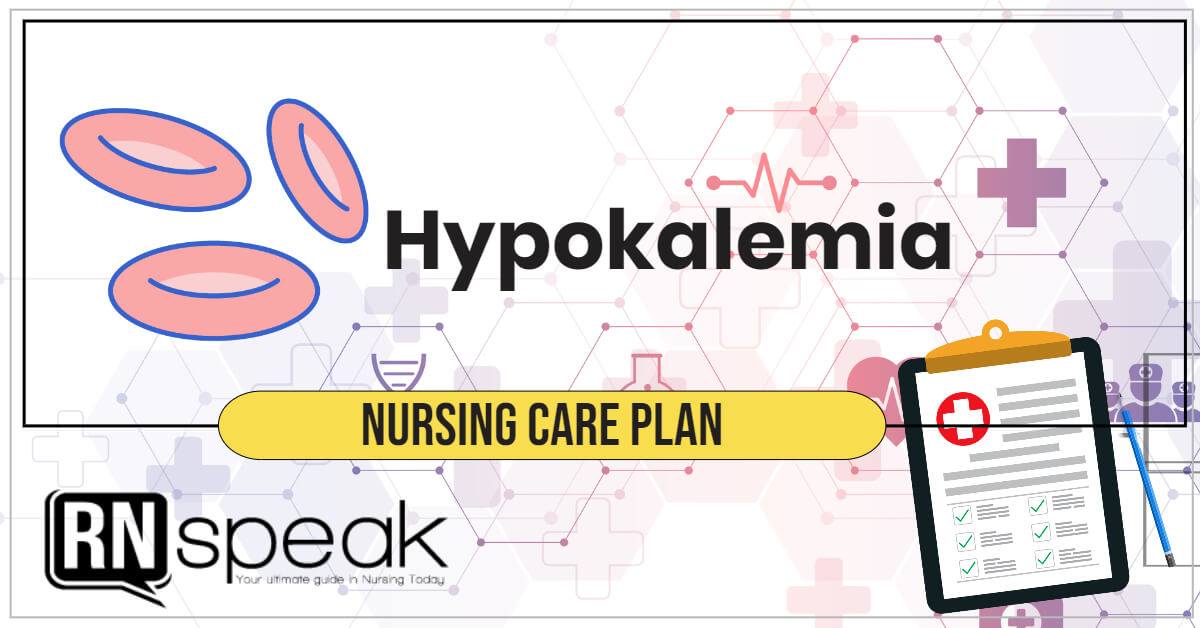Hypokalemia is a serum potassium level less than 3.5 mEq/L or 3.5 mmol/L. This indicates depletion in the normal potassium levels in the body, a potential life-threatening emergency and can be fatal.
Potassium helps in utilizing carbohydrates and protein to produce energy. It is also needed in the formation of muscles in the body. Potential health risks are avoidable as long as the potassium levels are kept at a normal level.
The body’s muscles depend highly on potassium level to function adequately. This includes the heart muscle wherein when the potassium level is depleted abnormal heart waves are formed. This may lead to serious heart problems, heart attack or death.
Causes of Hypokalemia
Conditions such as alcoholism, eating disorders, and renal disorders can cause a severe case of hypokalemia.
Below is a list of other common causes of hypokalemia:
- Gastrointestinal losses
- Vomiting
- Diarrhea
- Prolonged nasogastric suctioning
- Nutrition and metabolism
- Low potassium diet
- Starvation
- NPO status
- Crash diets
- Alcoholism
- Elimination
- Laxative abuse
- Potassium- depleting diuretics
- Enema
- Steroids
- Skin or cellular integrity
- Trauma
- Tissue injury
- Surgery
Clinical Manifestations of Potassium Deficiency
- Muscle Weakness – Significant muscle weakness can occur in hypokalemic patients. It usually begins in the lower extremities, progresses to the trunk and upper extremities and can worsen to the point of paralysis. Severe depletion in potassium level can lead to muscle spasms, twitching and cramps. The danger of potassium affecting the muscle is respiratory muscle paralysis which may lead to respiratory arrest.
- ECG Abnormalities – Decreased potassium level causes arrhythmia such as atrial fibrillation and ventricular asystole.
-
-
- ST-segment depression
- T wave depression
- U wave elevation
-
-
- Renal Abnormalities – Prolonged hypokalemia can cause structural and functional changes in the kidneys:
-
- Impaired concentrating ability – Dizziness and fainting
- Increased ammonia production – Increased frequency in urination
- Increased bicarbonate reabsorption – extreme thirst
- Altered sodium reabsorption – seizure and coma
- Hypokalemic nephropathy – Unable to hold urine
- Elevation in blood pressure
-
Laboratory and Diagnostics
-
- Serum potassium levels less than 3.5 mEq/L
- ECG changes- flat/inverted T waves, depressed ST segment, elevated U wave
- Metabolic alkalosis
- Urinary potassium excretion test exceeding 20 mEq/day
Hypokalemia Nursing Care Plan
Hypokalemia Nursing Care Plan [Full Text]
Nursing Problem with Cues
Subjective cues:
“I have been vomiting and experiencing diarrhea for the past few days. Now, my body feels very weak.”
Objective cues:
Decreased fluid intake of 150cc
Urine output of 400cc
Vomitus of yellowish fluid approximately 70 cc times three episodes for two days
Diarrhea; Watery stools times 4 episodes for two days
Muscle weakness noted upon assessment.
Febrile, with temperature of 38.5°C
BP of 90/50 mmHg
Pulse of 115 bpm
Presence of an elevated U wave on ECG result
Laboratory results
Decreased potassium level of 2.5 mEq/L
Nursing Diagnosis with Rationale
Altered electrolyte balance related to active fluid loss secondary to vomiting and diarrhea
Rationale
Potassium is an electrolyte needed primarily for muscle and nerve tissue function. Fluid loss from the body such as vomiting and diarrhea causes depletion of the electrolyte potassium partly because potassium is actually lost with gastric fluid. Also, large amounts of potassium found in the intestinal fluids are excreted during episodes of diarrhea. Depletion of potassium occurs and then leads to altered electrolyte balance in the body.
Objectives
Long term goal:
After 48 hours of nursing intervention, the client will be able to maintain serum potassium levels within the normal range.
Short term goals:
After 1 hour of health teaching, the client will be able to:
Identify measures to prevent hypokalemia.
Participate in the treatment regimen.
Interventions
- Monitor for signs and symptoms of hypokalemia:
-
- Fatigue
- Anorexia
- Muscle weakness
- Decreased bowel motility
- Dysrhythmias
- Shallow respirations
- Weak thread pulse
-
- Monitor ECG continuously.
- Strict monitoring of intake and output.
Independent:
Preventing hypokalemia
- Assist client in selecting foods rich in potassium as such as banana, fruit juices, melon, citrus fruits,and fresh vegetables.
Dependent
Institute measures to correct hypokalemia
Administer the following drugs, as prescribed:
-
- Oral potassium replacement
- Intravenous potassium replacement
- ACE inhibitor
- Potassium-sparing diuretic
Collaborative
- Monitor serum potassium levels.
- Monitor BUN and creatinine levels.
Rationale for Intervention
- Hypokalemia can be life-threatening. Careful assessment for its early presence is needed especially for high-risk patients.
- The ECG can provide useful information for hypokalemia. Patients receiving digitalis should be monitored closely for signs of digitalis toxicity because hypokalemia potentiates the action of digitalis.
- Careful monitoring of fluid intake and output is necessary because 40 mEq of potassium is lost for every liter of urine.
- Including the client in the plan of care elicits participation.
Also, potassium-rich foods in the diet help maintain potassium balance.
-
- Administered when potassium levels need to be replenished, as well as, in patients with ongoing potassium loss when it must be maintained.
- Used in the treatment of potassium deficiency when oral replacement is not feasible.
- Inhibits renal potassium excretion, can ameliorate some of the hypokalemia that thiazide and loop diuretics can cause.
- Facilitates excretion of sodium and water while sparing potassium.
- Evaluates the effectiveness of therapy.
- Renal function should be monitored for patients receiving potassium replacement.
Reference:
- Doenges, M. E., Moorhouse, M. F., & Murr, A. C. (2006). Nurse’s pocket guide: Diagnoses, prioritized interventions, and rationales. Philadelphia, PA: F.A. Davis.
- Hinkle, J. L. (2014). Brunner & Suddarth’s textbook of medical-surgical nursing (Edition 13.). Philadelphia: Wolters Kluwer Health/Lippincott Williams & Wilkins.
- Gitelman Syndrome UK [gitelmansuk]. (2015 Nov 22). Hypokalaemia ECG Changes. [Twitter moment] Retrieved from:https://twitter.com/gitelmansuk/status/668416488211136512








